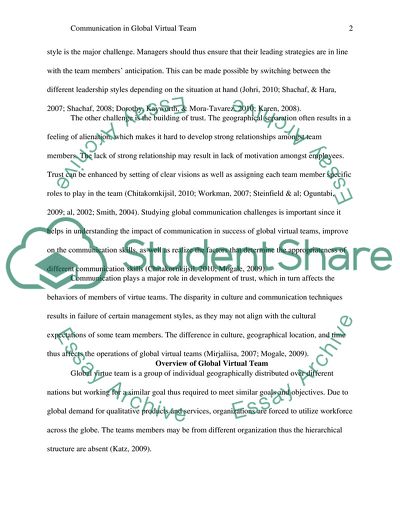Cite this document
(“Communication Challenges to Managers in Global Virtual Teams Research Paper”, n.d.)
Communication Challenges to Managers in Global Virtual Teams Research Paper. Retrieved from https://studentshare.org/miscellaneous/1598861-communication-challenges-to-managers-in-global-virtual-teams
Communication Challenges to Managers in Global Virtual Teams Research Paper. Retrieved from https://studentshare.org/miscellaneous/1598861-communication-challenges-to-managers-in-global-virtual-teams
(Communication Challenges to Managers in Global Virtual Teams Research Paper)
Communication Challenges to Managers in Global Virtual Teams Research Paper. https://studentshare.org/miscellaneous/1598861-communication-challenges-to-managers-in-global-virtual-teams.
Communication Challenges to Managers in Global Virtual Teams Research Paper. https://studentshare.org/miscellaneous/1598861-communication-challenges-to-managers-in-global-virtual-teams.
“Communication Challenges to Managers in Global Virtual Teams Research Paper”, n.d. https://studentshare.org/miscellaneous/1598861-communication-challenges-to-managers-in-global-virtual-teams.


